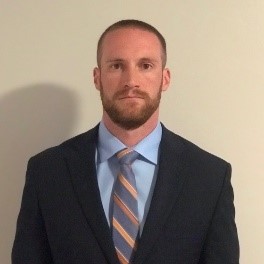
Executive protection professionals face a myriad of challenging global threats. This asymmetrical environment creates the need for highly trained, professional executive protection practitioners who possess the leadership, technical, physical, and communication skills to effectively safeguard their respective principal(s).
Most commonly, the executive protection agent’s principal will be a champion of a particular industry, which equates to a demanding business schedule. Typically, the drive to excel professionally is partnered with the drive to succeed in other areas, such as physical fitness/wellness. To accommodate their business schedule, training schedules will likely be during odd hours of the day and present unique challenges to the executive protection (EP) agents assigned to protect them.
Train
Depending on the size and scope of the team assigned to the principal, the planning of protective coverage during these activities can be a complex task. First, agents, if not on a rotation, will typically work more hours than the principal to ensure all logistics and security measures are in place before the start of the principal’s itinerary. This may lead to decreased time for the agents’ own physical fitness regime. The level of efficacy in protection has a direct relationship to one’s discipline in maintaining a high level of muscular and cardiovascular fitness. For example, if a principal is a runner who can pace multiple miles at a 7:30 minute per mile pace, the EP agent must be able to comfortably maintain this pace without sacrificing the roles and responsibilities needed to protect the principal. The ability to plan is a skill that is interwoven into the many layers of providing protection. A proper physical fitness regime is no different.
Plan
If the principal is running for 10 miles, it is not a best practice for one agent to run with the principal for that entire distance because, as mentioned before, EP agents cannot sacrifice their own ability to physically protect the principal in the event of an incident. To prepare such coverage, the EP team must conduct a thorough analysis of their staffing, logistics, and supplies, as well as a detailed route survey to adequately cover the principal during the physical fitness regime. If there is adequate staffing, the team should utilize the amount of personnel as an advantage and pre-stage physically “fresh” agents along the route, enabling a seamless transfer of coverage.
If the principal is a cyclist, other questions must be asked: Is a trail vehicle an option? Can the team pre-stage? What type of bike, and which tires, are required for the terrain? If it is logistically possible, the utilization of a trail vehicle dramatically increases the detail’s capabilities to not only provide rapid evacuation, but also carry more emergency medical equipment or items of preference for the principal. When trailing the principal and the environmental factors allow (i.e., absence of confirmed threats or operation in an area where the principal’s presence is unknown), agents should attempt to provide a loose follow and utilize a vehicle that blends with the surrounding area to maintain a low profile. If a loose follow is not possible, the vehicle could potentially alternate positions at different intervals, depending on the route and location of the principal, to create a series of evacuation checkpoints.
Further considerations are required to facilitate effective coverage for aquatic activities. It is imperative that the same level of care taken while advancing a motorcade route or a running route should be applied to the principal’s activities in and around water. If the principal is on a boat, has a float plan been communicated to other agents and the coast guard? Does the float plan include number of passengers onboard, estimated time on the water, approximate route, etc.? Does it account for sudden inclement weather or propulsion problems? Is the correct safety equipment on board to address an injury or medical emergency, or to conduct an emergency water rescue? Are the agents onboard trained and physically capable of making a water rescue?
Detailed planning, training, and anticipation of potential challenges are all essential to providing effective coverage during athletic activities. Understanding these factors and taking appropriate action in advance will simultaneously provide better protection for your principal, and make your protection detail far more effective in an ever-evolving, dynamic environment. Naturally, the concepts presented here and just the beginning. These questions should form a foundation for the creation, or further development, of well-defined team SOPs surrounding all aspects of the principal’s physical fitness regime.
For information about our executive protection services and training programs, please visit https://www.aus.com/executive-protection-and-intelligence-services
Blog contributor from Allied Universal® Executive Protection and Intelligence Services:

John Lower - Training Manager























